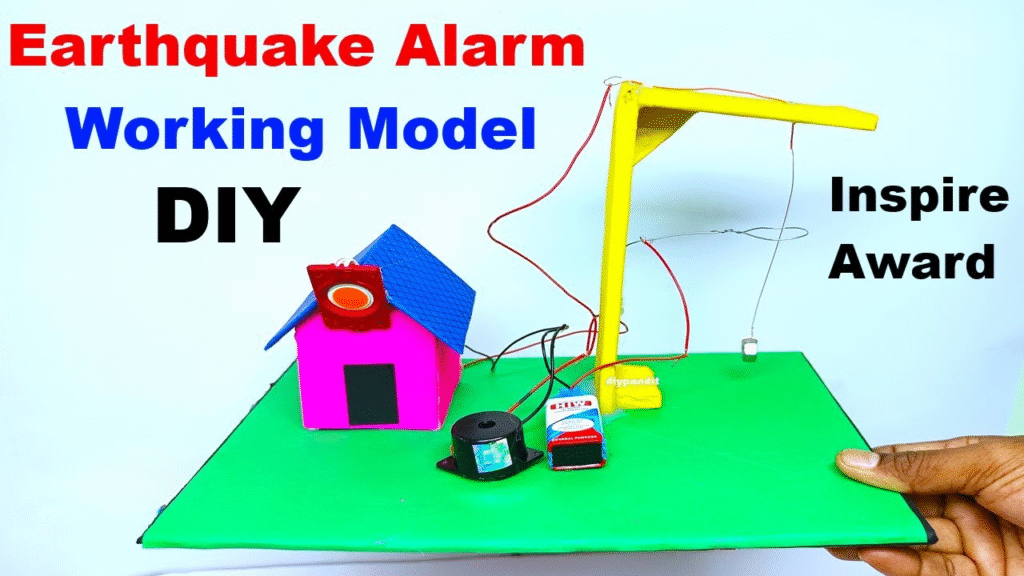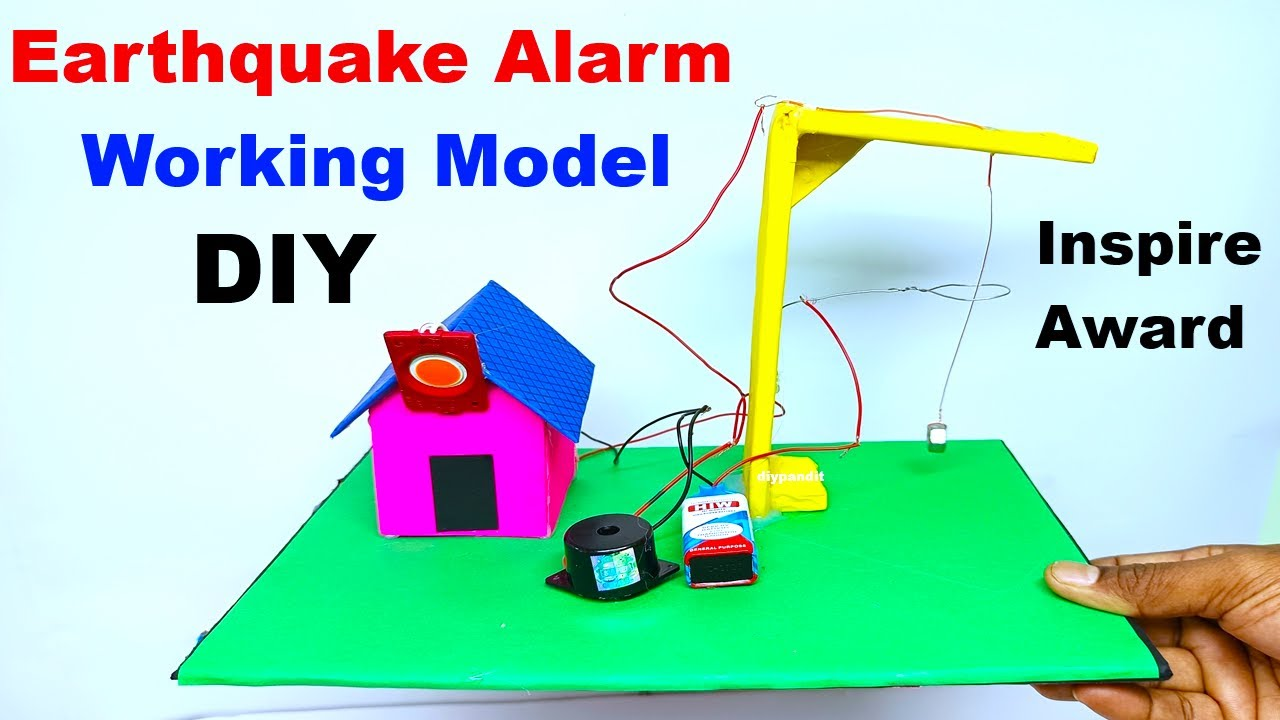Aim / Objective:
To demonstrate how an earthquake alarm can detect ground vibrations and alert people in advance, helping to reduce damage and save lives.

Materials Required:
- Small wooden or cardboard base
- Spring or pendulum (to detect vibrations)
- Switch or relay
- Buzzer or LED light (alarm)
- Wires and battery (5V–9V)
- Glue or tape
- Small weight (for pendulum)
- Optional: cardboard or plastic for housing
Working Principle:
The model works on the principle of vibration detection.
- During an earthquake, ground vibrations cause the pendulum or spring system to move.
- This movement closes an electric circuit, triggering a buzzer or LED as an alarm.
- The system demonstrates how early detection devices sense seismic activity and alert people before major shaking occurs.
Procedure:
- Fix a pendulum or spring-based weight system on a base so it can swing freely.
- Connect a switch or relay to the pendulum, so movement of the pendulum completes the circuit.
- Connect the buzzer or LED to the circuit with a battery.
- Simulate vibrations by gently shaking the base.
- Observe how the movement of the pendulum or spring activates the alarm.
Observation:
When the base is shaken, the pendulum moves and closes the circuit, causing the buzzer to ring or LED to glow.
This shows that even small vibrations can trigger the alarm, simulating earthquake detection.
Conclusion:
The earthquake alarm model demonstrates a simple way to detect ground vibrations and alert people.
It shows the basic principle behind real seismic alarms, which can save lives and minimize damage during earthquakes.

